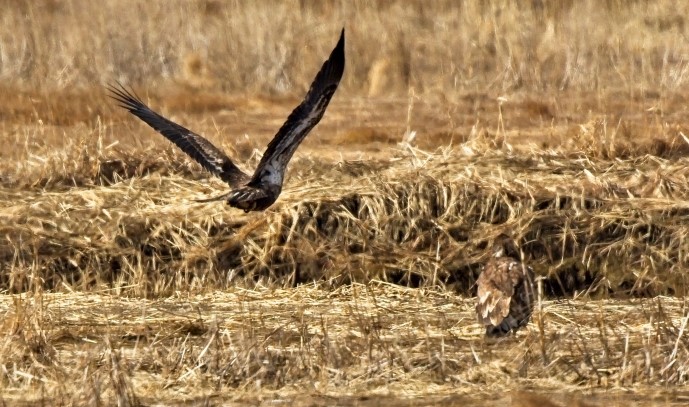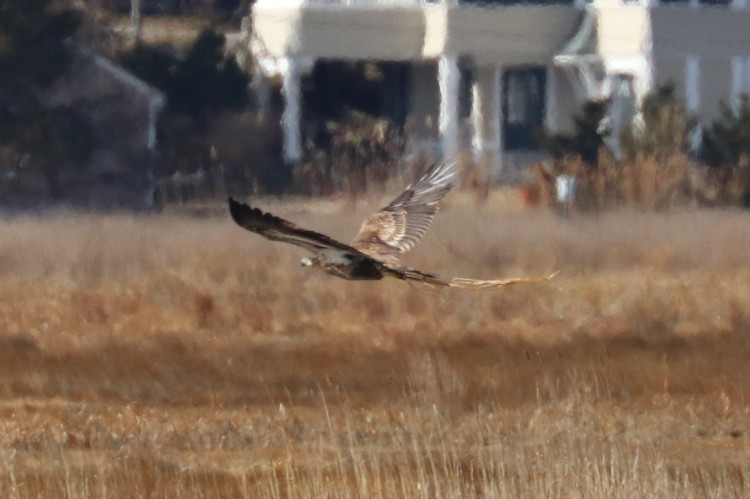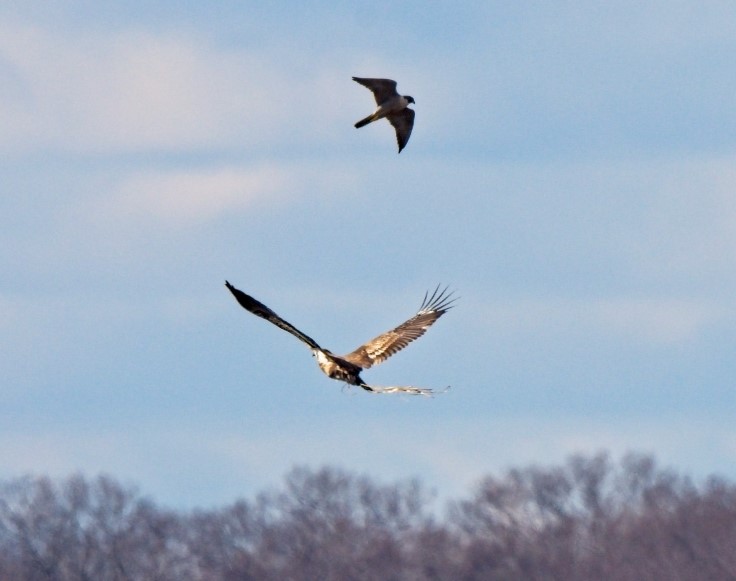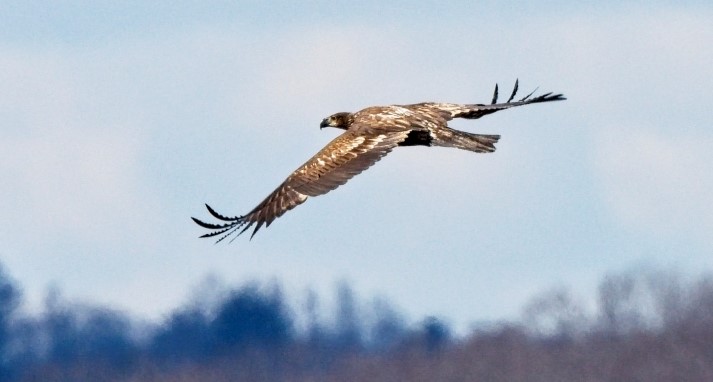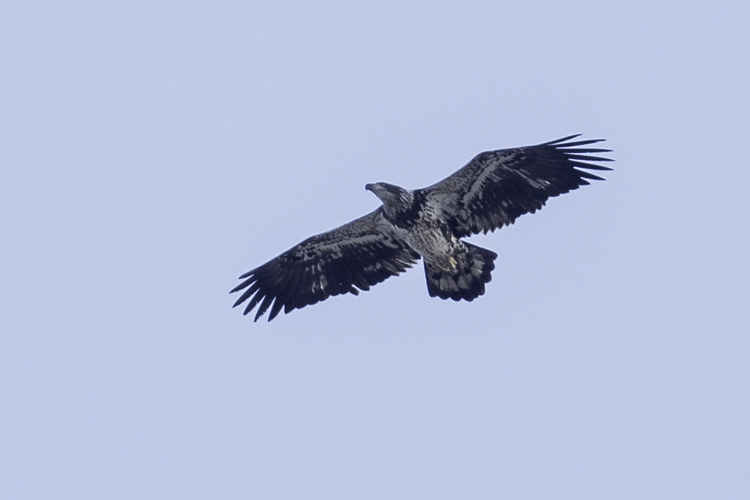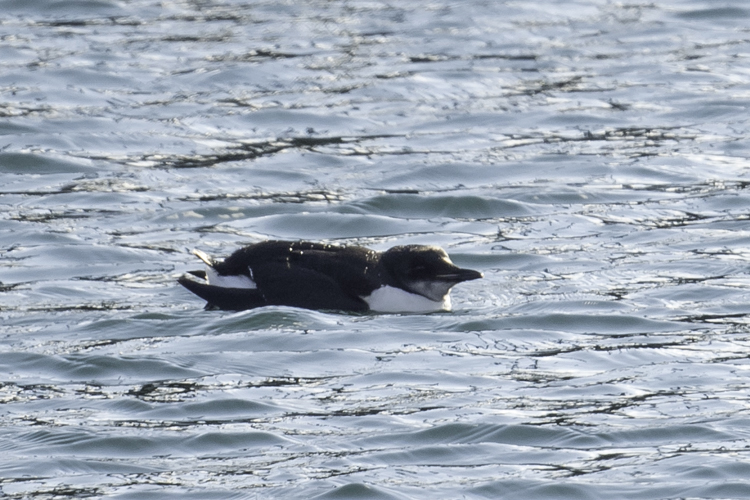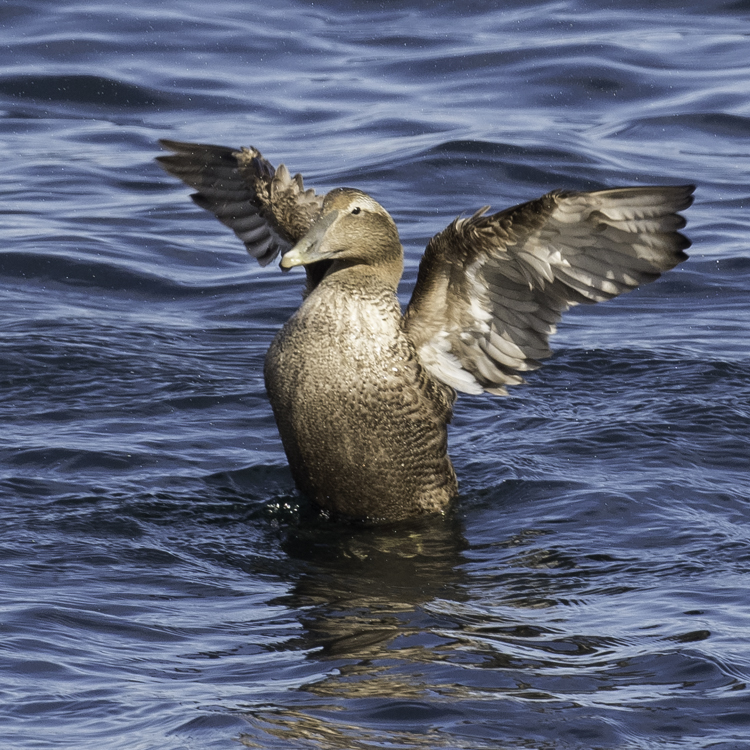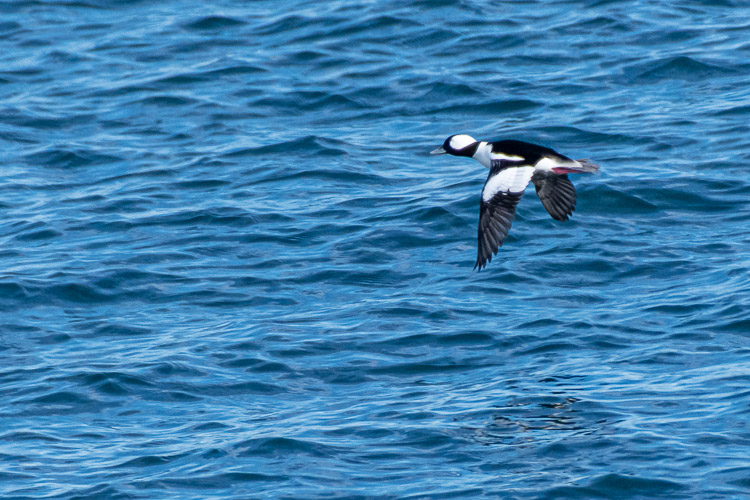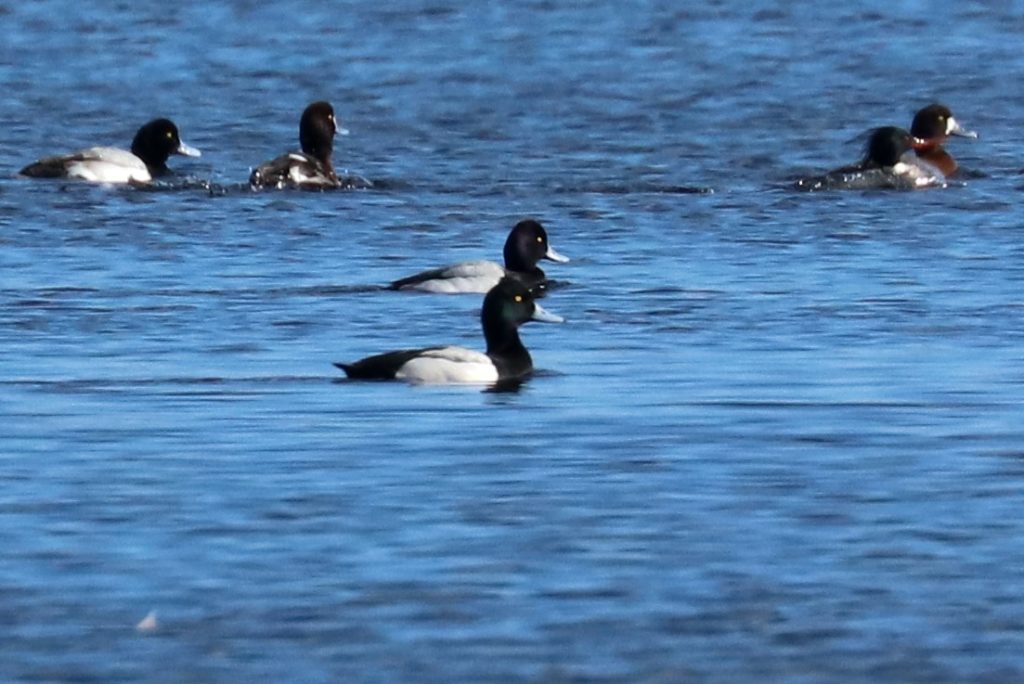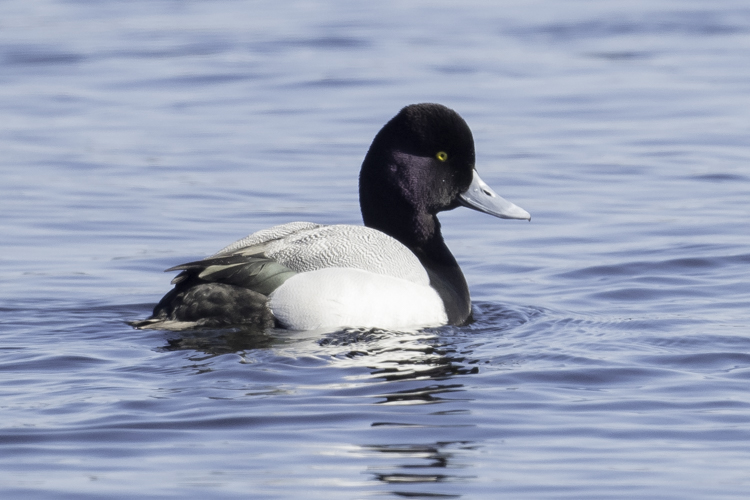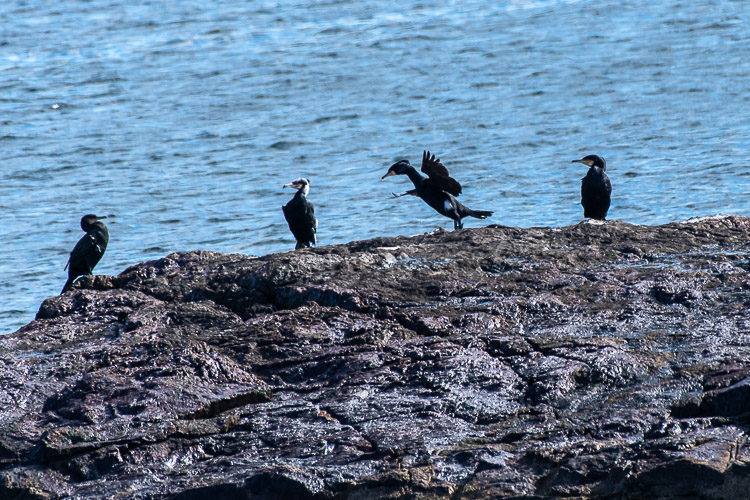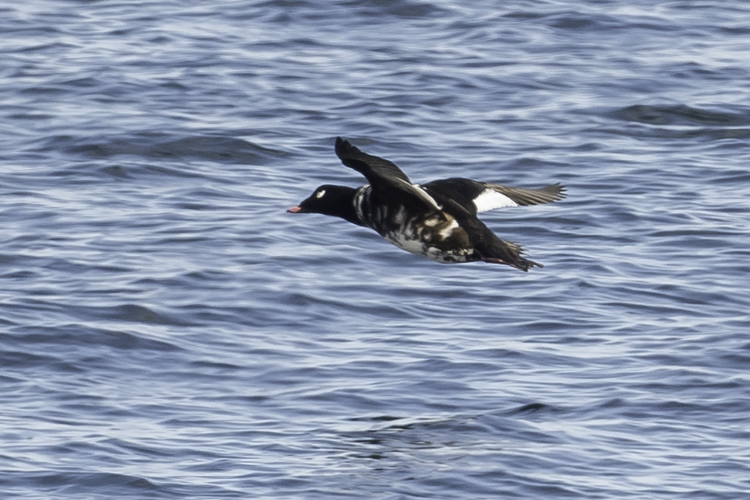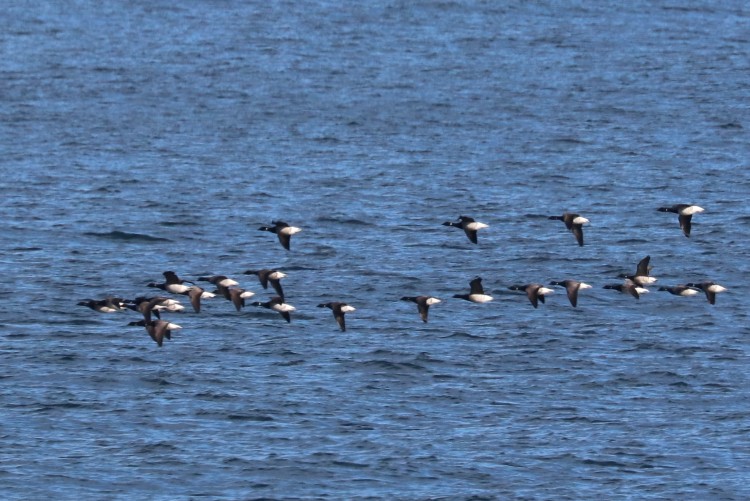Wednesday, March 11, 2020, was a lovely day to go birding on Cape Ann. Unbeknownst to us, it was also the last Wednesday before the coronavirus threat became a pandemic, and two days before Mass Audubon shut down all programs. With the whiff of all that in the wind, we were grateful to have the freedom to assemble for the love of birds. I would therefore describe the small group that met for WMB last Wednesday as “stalwart,” but in a new way. To illustrate the delight I felt, I have a story about a particular WMBer who showed up last week as well as on the Wednesday in 2016 that attracted the smallest audience of my tenure – six. There was Joyce Spencer that day four years ago, in spite of horizontal precipitation at near-freezing temperatures. She was covered – smothered! – in rain-repellent gear as almost-frozen droplets raced into our faces. And so we birded. Joyce is not tall, but she is very big in my mind. Still following protocol, she showed up last week too. I hardly know how to express my appreciation for Joyce’s dedication to our corporate effort to see birds, and for the same loyalty of so many other WMBers. We will be out there together again at some future date. Do remember that in this difficult time of uncertainty.
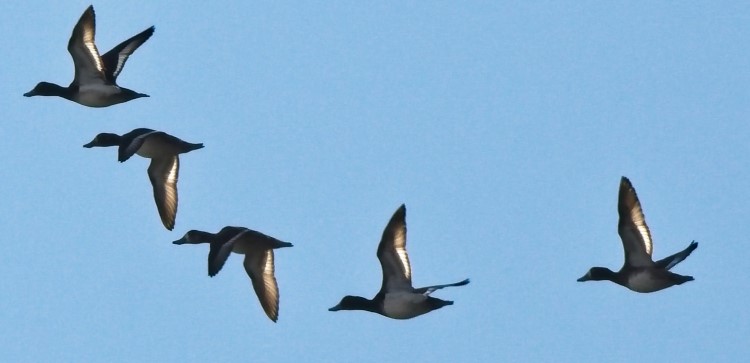
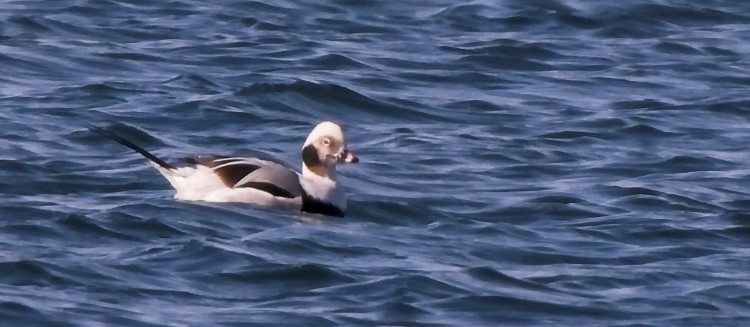
We began our excursion at Jodrey State Fish Pier as is our habit. We saw no special gulls, no Peregrine Falcon on the distant City Hall roof, but a Thick-billed Murre was floating around out in the mid-to-outer harbor. Yay! That bird sparked a search for a Surf Scoter, which we did see, and for white-winged gulls, which we did not. “Okay, let’s check the inner harbor, then head out to Eastern Point.” We moved on.
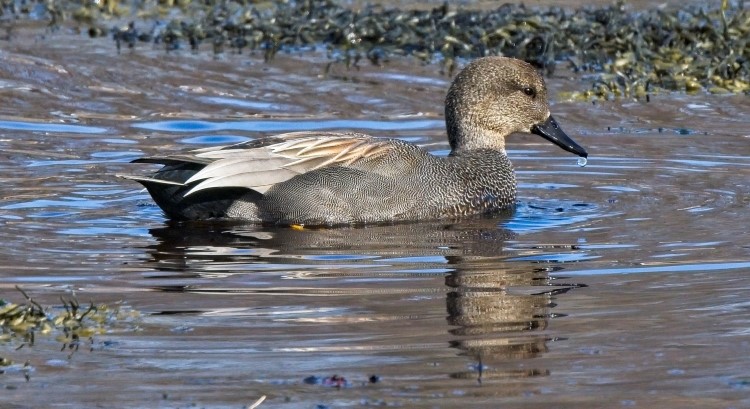
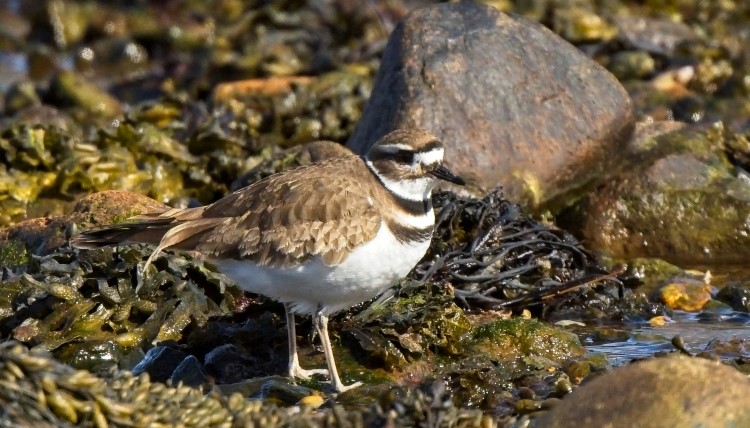
Eastern Point was different. Buffleheads were everywhere, courting like mad. Do Buffleheads watch the stock market? Red-breasted Mergansers looked resplendent, courting and diving in any water that promised prey. We tried to spy scoters, but only spry-eyed observers with spotting scopes, some well-shared, could find the few that were there.
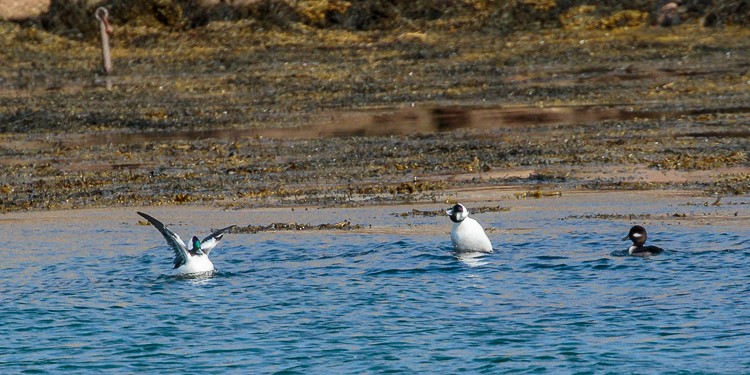
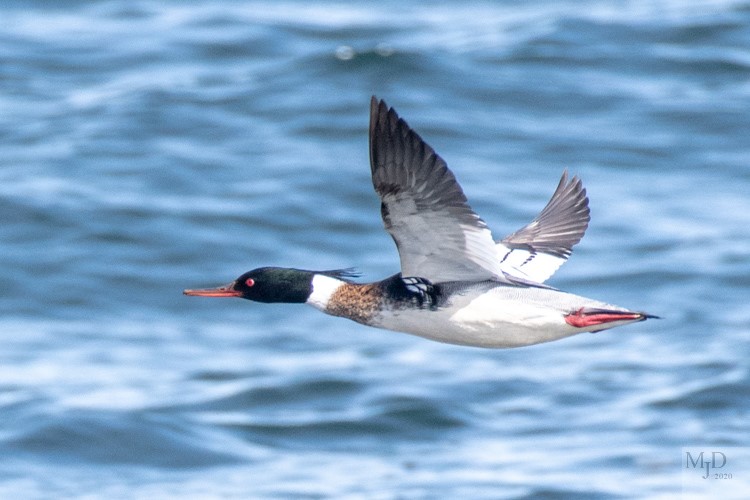
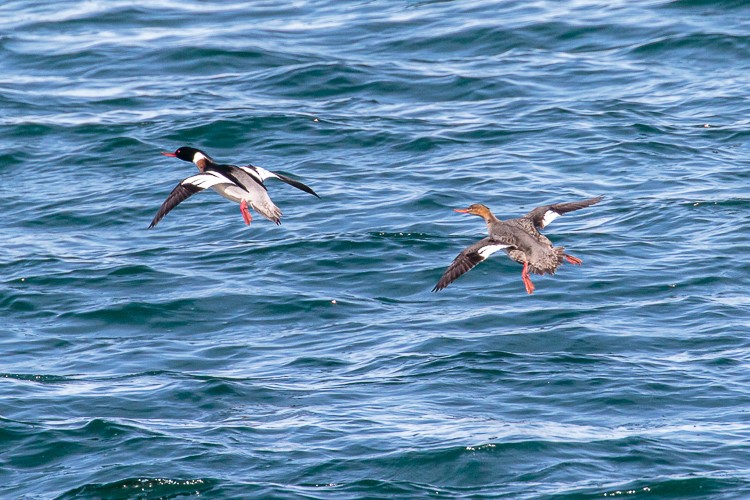
Niles Pond was full of scaup. Some appeared clearly to be Lesser Scaup, and we assumed that most if not all were Lessers. There were also Ringed-necked Ducks, a few Mallards, gulls, and some passerines singing vigorously in the neighborhood.
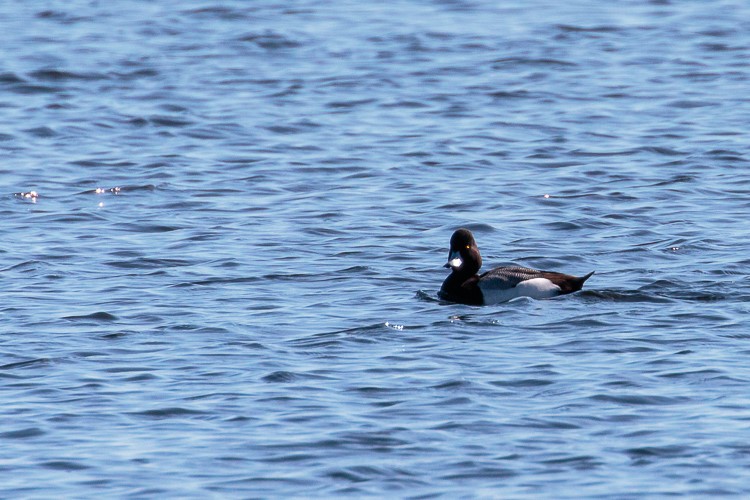

Motoring along Atlantic Road, we saw the lingering Great Cormorants on the one rock they almost always roost on, named (of course) “Cormorant Rock.” One of them sported the white cheek-skin color seen in the breeding condition of that species. The other ones looked a bit “shoddy” – which pejorative shows my anthropomorphic misjudgment, however affectionate. Cormorants do not care what we think of their posture, plumage, soft-part color, or fecal production!
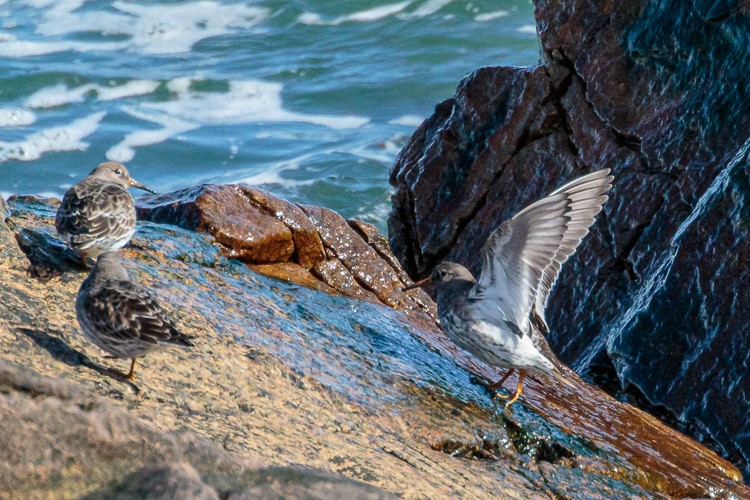
We next stopped at the Elks Club parking lot. A drama of Purple Sandpipers unfolded on the rocks below us. Many, many scoters, a mix of Black and White-winged, dotted the sea well offshore. Oh, how glad we were to see them! Scoters have been scarce this year, so seeing a bunch of them helped.
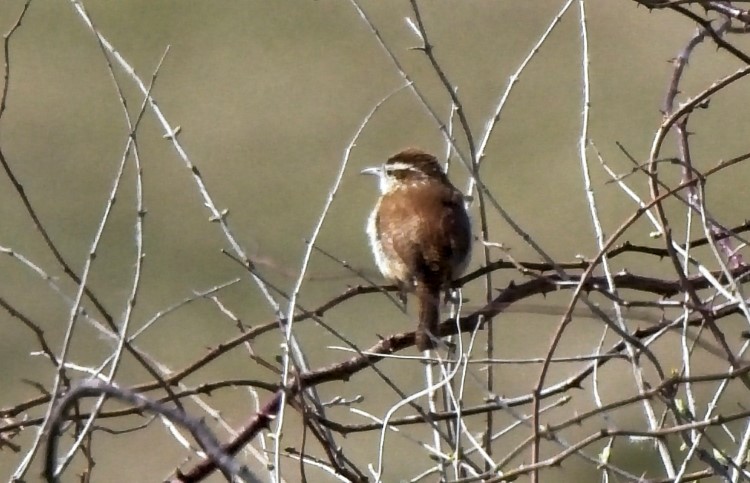
We stopped, as we must always, at the restrooms at Rockport Harbor. They were closed for cleaning!!! That is, until a nice young man expressed compassion, saw reason, and admitted us. No odd birds in the harbor this time. But along the road to the two great spots where we find the rocky-shore birds, we caught glimpses of a couple of Brant. Since we know that Brant show up on Front Beach in Rockport, we always glance that way. When they are there, we are filled with joyous satisfaction. Or, at least I am.
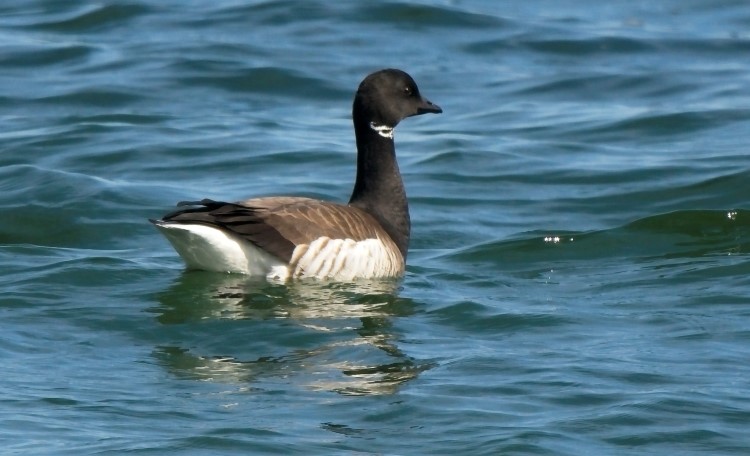
Our timing only left us Andrews Point. A plethora of Harlequin Ducks cavorted there, and an apparently mated pair of Black Scoters represented for their species in fine style. A Great Cormorant flew by offshore, and other species showed up in the bright sunlight.
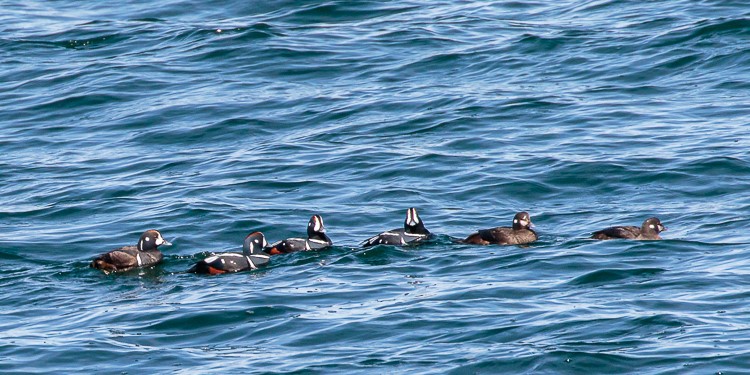
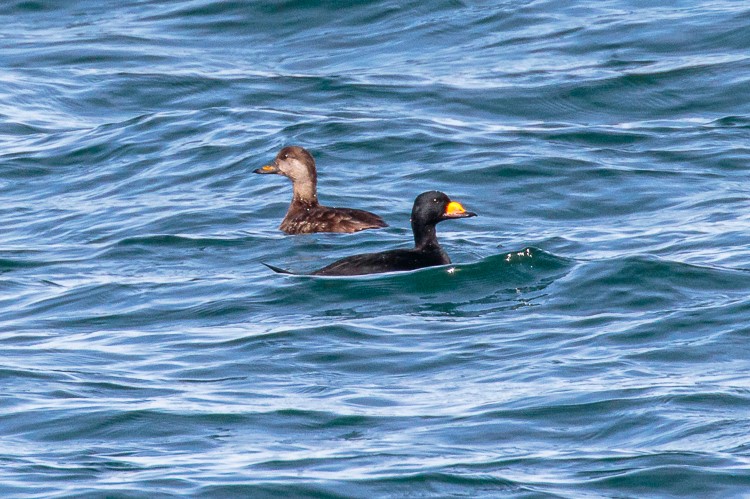
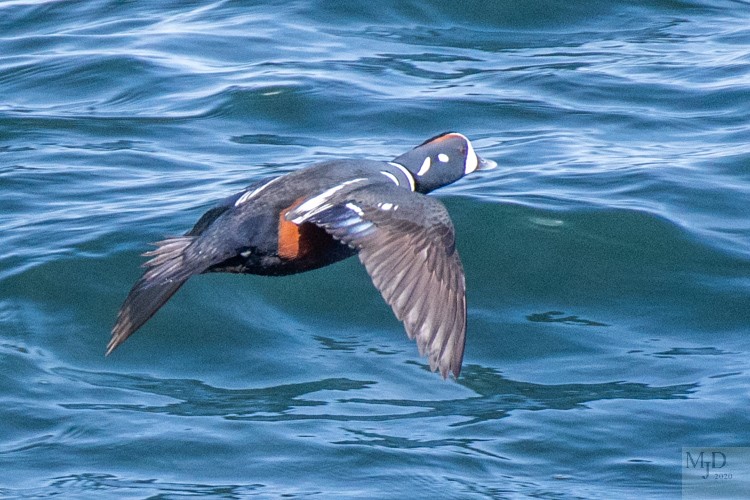
None of the birds we saw last week acted differently from the usual, amazing way they always act and appear. They were spectacular. They have to be: that’s how they attract mates and ensure the continuation of their species. What do you say we make every effort in this time of difficulty to be spectacular in word and deed, to help everyone of our species survive and thrive, so that our successors will simply be? Is that a goal? I do think so.
Our List:
Brant (2) – Front Beach, Rockport.
Canada Goose (~ 25) – various.
Gadwall – Eastern Point cove.
Mallard (5) – Niles Pond.
American Black Duck (6) – Eastern Point.
Ring-necked Duck (~ 20) – Niles Pond.
Scaup sp. (~ 50) – probable Lesser Scaup; Niles Pond.
Common Eider – common.
Harlequin Duck (~ 35) – Andrews Point.
Surf Scoter (2) – 1, Jodrey Fish Pier; 1, Elks Club.
White-winged Scoter – common, mostly at Elks Club.
Black Scoter – common.
Long-tailed Duck (~ 20) – various.
Bufflehead – common.
Red-breasted Merganser – common.
Horned Grebe (2) – Elks Club.
Red-necked Grebe (16) – Elks Club.
Rock Pigeon
Mourning Dove
Killdeer (2) – Eastern Point cove.
Purple Sandpiper (5) – Elks Club.
Thick-billed Murre (1) – Jodrey Fish Pier.
Ring-billed Gull (2)
Herring Gull – common.
Great Black-backed Gull – common.
Common Loon (5) – 2, Eastern Point; 2, Elks Club; 1, Andrews Point.
Great Cormorant (5) – 4, “Cormorant Rock,” Atlantic Rd.
Turkey Vulture (1)
Red-tailed Hawk (3) – 2, Eastern Point.
Downy Woodpecker (1) – Niles Pond.
American Crow – common.
Black-capped Chickadee (1) – Eastern Point.
Tufted Titmouse (1) – singing; Eastern Point.
White-breasted Nuthatch (1) – Eastern Point.
Carolina Wren (1) – Elks Club.
American Robin (1)
European Starling
House Sparrow
House Finch (6) – various.
Song Sparrow (~ 10) – singing; various.
Red-winged Blackbird (5)
Common Grackle (3) – Eastern Point.
Northern Cardinal (3)


